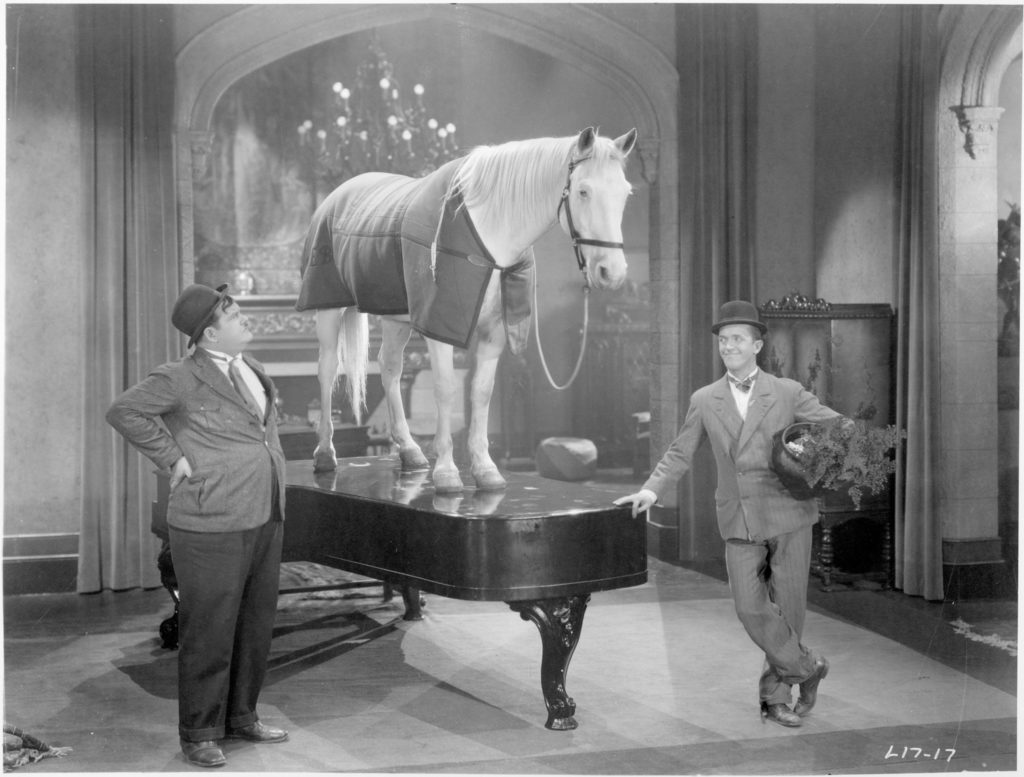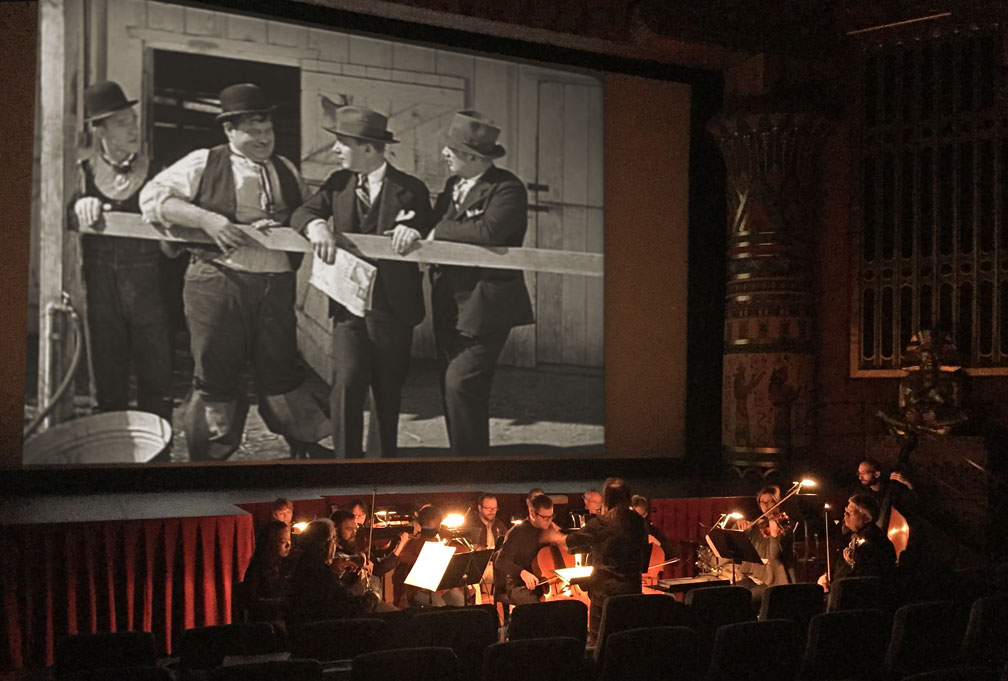My favorite Laurel & Hardy shorts are the ones with little or no plot. Don’t ask me why. Films like Busy Bodies, Helpmates, Towed in a Hole and of course The Music Box that are basically Stan and Ollie just being Stan and Ollie. They’re about their relationship and about how they get something done (or not): clean up a messy house, move a piano, repair a boat or, as in the case with Busy Bodies, just try to get through a day at work.
The shorts that are more plot-driven are just as funny, don’t get me wrong. Maybe, for me, its because in many of the “linear narrative” shorts they are in trouble with someone (usually Walter Long or their wives) who just has it in for them that I gravitate toward the other films. This is probably why Wrong Again is one of my favorite of their silent shorts.
Stan Laurel and Oliver Hardy had separate careers in silent film for around ten years before the gods and goddesses of slapstick film comedy brought them together in front of the camera at the Hal Roach Studios in the late 1920s. Their teaming happened and pretty much cemented in the thirty or so silent comedy two-reelers they made together from 1927-1929. Unlike nearly all of their contemporaries, talking pictures — with its synchronized recorded dialog and real-time speed — became an asset. They’d already been slowing down the pacing of their rhythms, most likely aided by Leo McCarey who was either directing them or supervising the shorts, and as it turned out their voices matched their personas quite nicely.
There is a sequence about a third of the way in to Wrong Again where Stan and Ollie sit on a sofa and have a conversation, courtesy of some very simple intertitles, about the confusing situation they’ve found themselves in. It could just as easily work as a dialog sequence if the film had been made as a part-talkie.
The rest of the film, however, can only work as a silent film. Not because of the importance of silence, but because of the unreality that Silent Film allows an audience to buy in the interest of comedy. Laurel and Hardy are stable workers who hear that a millionaire has offered a reward for the return of “Blue Boy”. Thinking it’s the horse by that name at their stable — and not the famous painting stolen from the rich man — they set out to return the object to its owner. Which gets us to this moment in the film:

In a sound film the painting’s owner, busy upstairs getting dressed for a visit from his mother, would hear the horse’s hooves and neighing, and that would be the end of it. As an audience, we buy this logic, as well as the logic that Stan and Ollie aren’t worried about the noises Blue Boy makes. Even when the horse chases them around and around the living room.
Over the last several years, I’ve been commissioned to compose orchestral scores for silent comedy shorts that were premiered by the Boise Philharmonic Chamber Ensemble as well as by their Youth Orchestra. When it came time to choose a silent comedy short as the score I’d create in 2016 for a premier in February 2017, I wanted to do a Laurel & Hardy comedy, and chose Wrong Again. Sure, I could’ve gone with something better known like Big Business or with more musical cues like You’re Darn Tootin’, but I just really like Wrong Again. (The restored Battle of the Century wasn’t an option at the time.)
“Blue Boy”, as we call the film at home, is one of the comedy shorts I that I show in the silent film course I teach at Wesleyan and my students — who have little or no prior exposure to Stan and Ollie — absolutely go for it.
There’s information about my orchestral scores for silent comedy films here.
BTW, I don’t use the famous “cuckoo” theme in my Wrong Again score, but sometimes when I accompany one of the L&H shorts on piano I’ll utilize it; I talk about why in episode 28 of my Silent Film Music Podcast.
